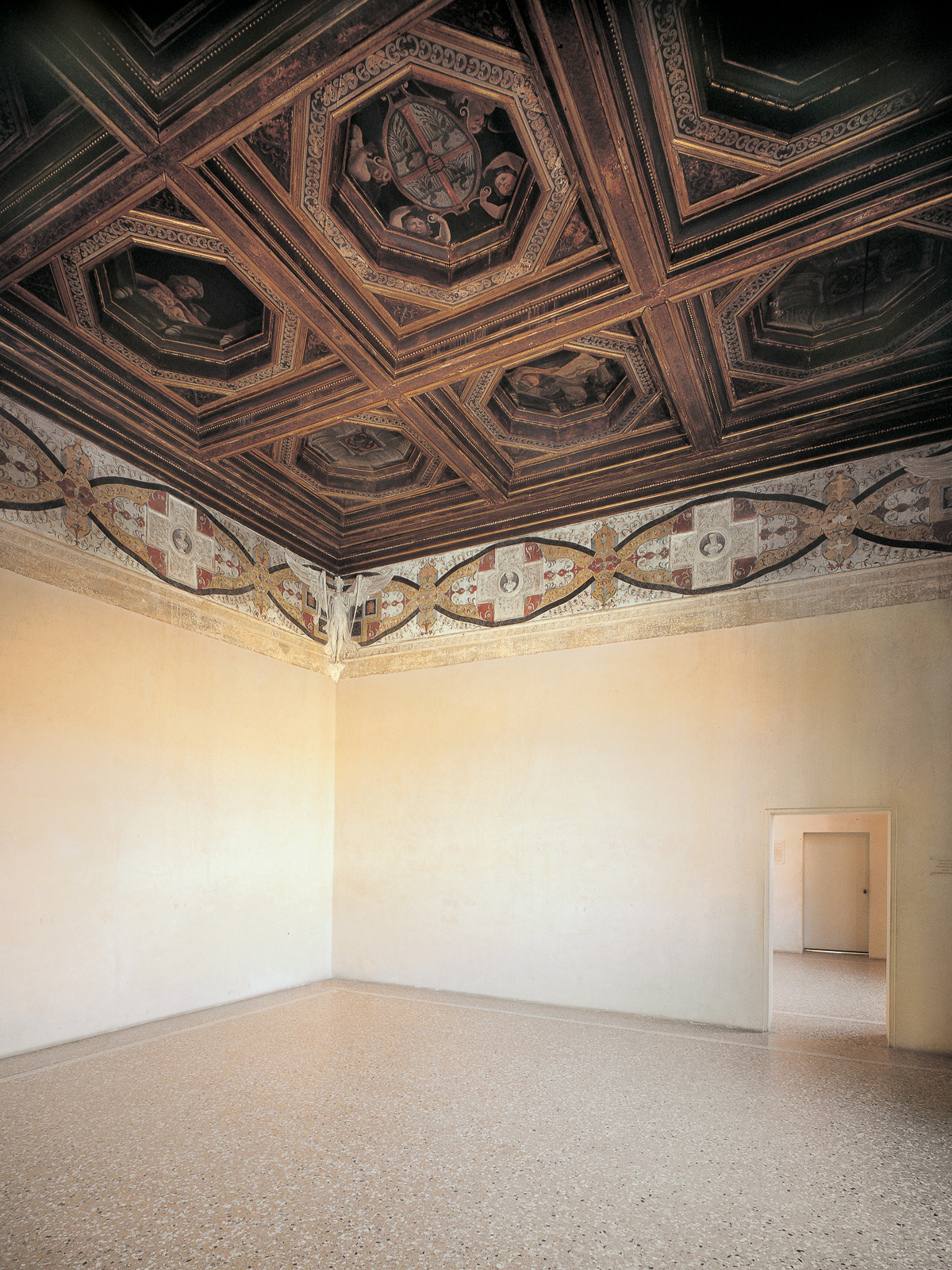
The name derives from the winged Victories portrayed in the corners of the room together with two symbols of Fame bearing long trumpets.
The frieze comprises elegant painted grotesques on a background of imitation semi-precious stones, as described in a contemporary document. Oval partitions contain stucco crosses with clipeate busts, also in relief.
The stuccoes are attributed to Nicolò da Milano, while the paintings are by Agostino da Mozzanica. The overall decoration of the room can be dated 1528. This is confirmed by the absence of the mount Olympus device in the Gonzaga coat of arms in the centre of the ceiling. This appears only after 1530.
The decoration of the ceiling is particularly worthy of note: in an example unique in the palazzo the wooden coffers are decorated with scenes of daily life seen from below, in clear reference to Mantegna’s Bridal Chamber at the Ducal Palace.
We see an elderly woman picking fleas out of a child’s hair, a woman hanging out a shirt, a young woman combing her hair and, in a direct reference to Mantegna, another approaching a vase of carnations on the balcony.

The name derives from the winged Victories portrayed in the corners of the room together with two symbols of Fame bearing long trumpets.
The frieze comprises elegant painted grotesques on a background of imitation semi-precious stones, as described in a contemporary document. Oval partitions contain stucco crosses with clipeate busts, also in relief.
The stuccoes are attributed to Nicolò da Milano, while the paintings are by Agostino da Mozzanica. The overall decoration of the room can be dated 1528. This is confirmed by the absence of the mount Olympus device in the Gonzaga coat of arms in the centre of the ceiling. This appears only after 1530.
The decoration of the ceiling is particularly worthy of note: in an example unique in the palazzo the wooden coffers are decorated with scenes of daily life seen from below, in clear reference to Mantegna’s Bridal Chamber at the Ducal Palace.
We see an elderly woman picking fleas out of a child’s hair, a woman hanging out a shirt, a young woman combing her hair and, in a direct reference to Mantegna, another approaching a vase of carnations on the balcony.

